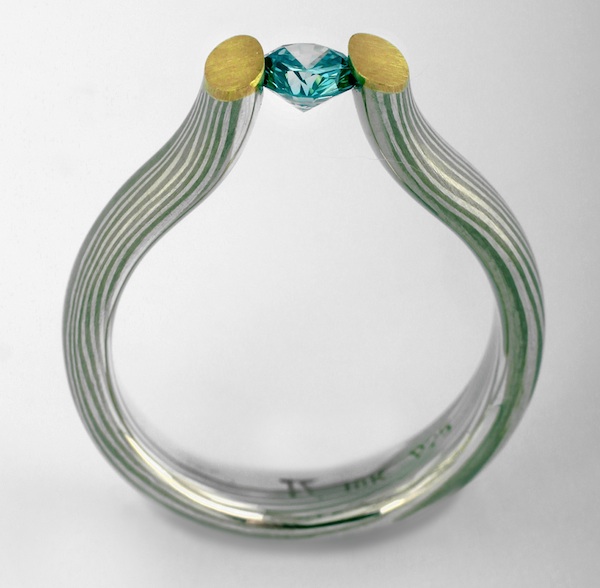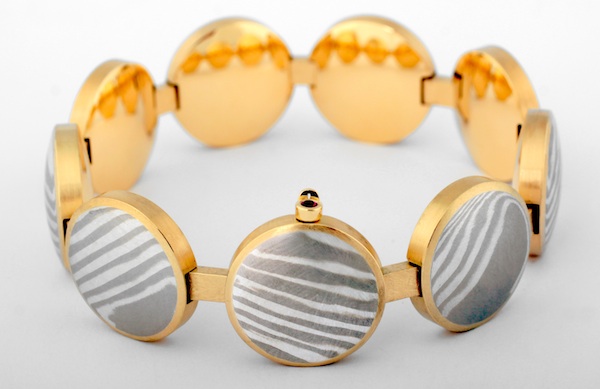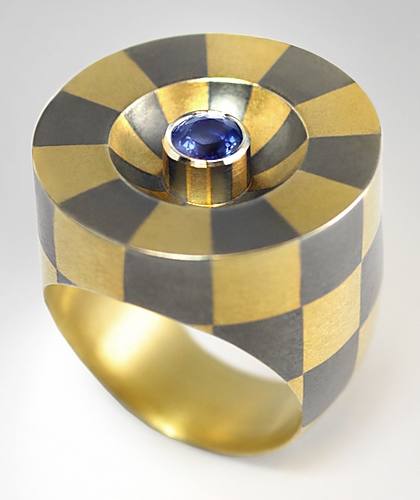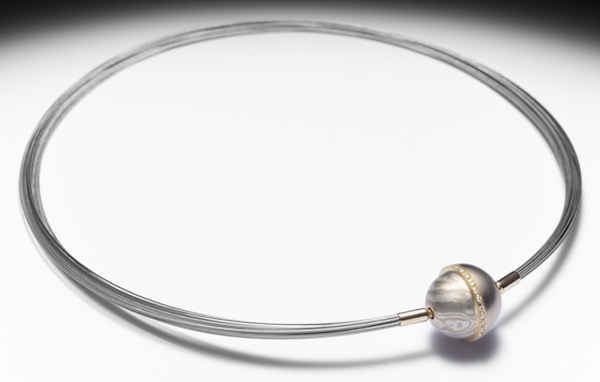When you first look at the sleek ring designed by Montreal-based jewelry artist Pierre-Yves Paquette, nominated for last year’s Niche Awards, it doesn’t scream “mokume gane.” The shank has graceful, symmetrical stripes that emphasize its subtle curves but you have to look close to see that the stripes were made using the Japanese method of fusing layers of different-colored metals – in this case, grey gold and sterling. Paquette performs this labor-intensive process by hand and he’s worked long and hard to come up with a spin on it that is uniquely his own.

“Traditionally, mokume gane was mostly used for decorative pieces, depicting scenes of nature and things like that. It’s evolved in that direction,” Paquette says. “I’m using it as a way to get simple, fluid lines.”
As Paquette is the first to point out, his jewelry looks more like contemporary German design than traditional Japanese. “I like the German style of really slick lines, and creating simple pieces using a hard technical process,” he says.

Using mokume this way can actually be more challenging than the traditional approach, he says. “When you do a piece with really complicated patterns, it’s easy to make mistakes and nobody notices. Using simple, contemporary lines gives you more of a challenge. To me, it’s a good way of showing the technical aspect of the thing without getting lost in the baggage.”

“It’s actually very hard to control the texture of mokume gane so that the patterns add up in a symmetrical way,” he adds. Many jewelry artists get so caught up in creating patterns with the metal, he says, that they forget about the jewelry design itself. “This is because it’s so hard to make the mokume gane to start with, they get lost in the process and forget that the main goal of making jewelry is actually the design.”
While most people who work with mokume gane start by making patterns in the metal and then decide what to do with them, Paquette designs the pattern to fit the piece, working on all aspects simultaneously. He prefers to work with two colored metals at a time, claiming you lose too much detail if you have three or more. He is more interested in texture than color.

But even limiting colors and patterns, the process is almost impossible to completely master, he says. “On the technical side, it’s always changing. Every time you make a piece of mokume gane, it reacts differently. Each time you think you’ve done it the best way, then something happens you’ve never seen before. We’re trying to control it, but sometimes I think it’s the mokume gane that’s controlling us.”
As simple as his designs may appear in the end, he realizes he’s chosen one of the most labor-intensive methods of creating them. “Just making the material itself takes as much time as making a piece of jewelry, so the entire process takes almost twice the time it would take to make regular piece.”
So why do it? “I’m a bit of a technical freak, I would say,” he says, laughing. “I love doing complicated things, pushing the limits further and further. It kills me to do the same piece over and over, so this is a good way to escape the routine.”
You can find more of Pierre-Yves Paquette’s jewely on his website.
Related posts:

